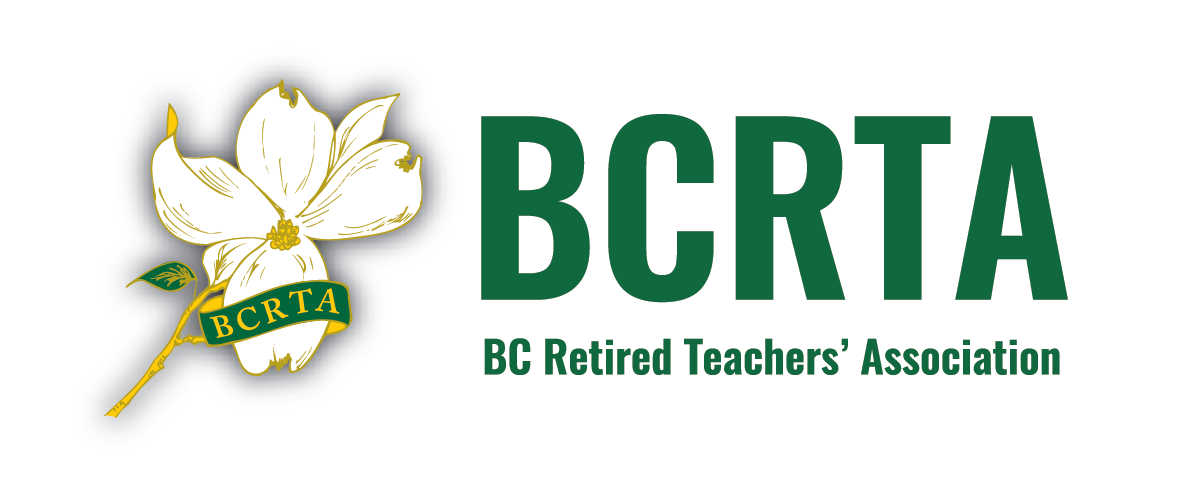 [/av_one_fourth]
[av_three_fourth av_uid=’av-4le34u’]There is “a sacred trust” for Government to protect citizens who have earned pensions as compensation for services rendered during their working lives. The promise made by Justin Trudeau just before the 2015 federal election states: “DBPs [defined-benefit pensions], which have already been paid for by employees and pensioners, should not retroactively be changed into TBPs [target benefit pensions].” [/av_three_fourth]
[av_one_fourth first av_uid=’av-4gqiq6′]
[/av_one_fourth]
[av_three_fourth av_uid=’av-4le34u’]There is “a sacred trust” for Government to protect citizens who have earned pensions as compensation for services rendered during their working lives. The promise made by Justin Trudeau just before the 2015 federal election states: “DBPs [defined-benefit pensions], which have already been paid for by employees and pensioners, should not retroactively be changed into TBPs [target benefit pensions].” [/av_three_fourth]
[av_one_fourth first av_uid=’av-4gqiq6′] [/av_one_fourth]
[av_three_fourth av_uid=’av-f1g72′]Yet, on October 29, 2016, just a year after their election, without any press release, with no advance notice to unions or pension plan members or retirees – with no prior public consultation – the Liberal Government introduced Bill C-27.[/av_three_fourth]
[av_one_fourth first av_uid=’av-40rjni’]
[/av_one_fourth]
[av_three_fourth av_uid=’av-f1g72′]Yet, on October 29, 2016, just a year after their election, without any press release, with no advance notice to unions or pension plan members or retirees – with no prior public consultation – the Liberal Government introduced Bill C-27.[/av_three_fourth]
[av_one_fourth first av_uid=’av-40rjni’] [/av_one_fourth]
[av_three_fourth av_uid=’av-e8bl2′]Bill C-27 seeks to amend the Pension Benefits Standards Act of 1985. It signifies the first time a strategy has been articulated whereby vested guaranteed pension benefits can legally be converted to non-guaranteed, conditional pension benefits. It introduces a target benefit plan framework in Canada’s pension landscape, and it allows for secure defined benefits plans to convert to target benefit plans, where all the risks are transferred to plan members. Most of the language of this legislation is centred on enabling that conversion.[/av_three_fourth]
[av_one_fourth first av_uid=’av-3r8mqu’]
[/av_one_fourth]
[av_three_fourth av_uid=’av-e8bl2′]Bill C-27 seeks to amend the Pension Benefits Standards Act of 1985. It signifies the first time a strategy has been articulated whereby vested guaranteed pension benefits can legally be converted to non-guaranteed, conditional pension benefits. It introduces a target benefit plan framework in Canada’s pension landscape, and it allows for secure defined benefits plans to convert to target benefit plans, where all the risks are transferred to plan members. Most of the language of this legislation is centred on enabling that conversion.[/av_three_fourth]
[av_one_fourth first av_uid=’av-3r8mqu’] [/av_one_fourth]
[av_three_fourth av_uid=’av-3iwwme’]In plans such as the BC Teachers’ Pension Plan, which is an example of a defined benefit plan, both members and employers assume the risk and make contributions from time to time to guarantee pension amounts at the end of a member’s lifetime. The result is a large pooled amount of money, held for a long time, on which investments can be made. The returns pay for about 80% of the pensions. [/av_three_fourth]
[av_one_fourth first av_uid=’av-cdk1a’]
[/av_one_fourth]
[av_three_fourth av_uid=’av-3iwwme’]In plans such as the BC Teachers’ Pension Plan, which is an example of a defined benefit plan, both members and employers assume the risk and make contributions from time to time to guarantee pension amounts at the end of a member’s lifetime. The result is a large pooled amount of money, held for a long time, on which investments can be made. The returns pay for about 80% of the pensions. [/av_three_fourth]
[av_one_fourth first av_uid=’av-cdk1a’] [/av_one_fourth]
[av_three_fourth av_uid=’av-36cgta’]Defined benefit plans constitute one of the strongest retirement income systems. They guarantee retirement security to their members, which contributes to national prosperity; the pension income cycles back to the economy through consumer spending and taxes, which, in turn, generate growth and employment; defined benefit plan retirees are less likely to rely on government assistance, such as the Guaranteed Income Supplement (GIS); and solid retirement income brings better health status and outcomes, reducing demands on the health system and inspiring volunteerism.[/av_three_fourth]
[av_one_fourth first av_uid=’av-30qlu6′]
[/av_one_fourth]
[av_three_fourth av_uid=’av-36cgta’]Defined benefit plans constitute one of the strongest retirement income systems. They guarantee retirement security to their members, which contributes to national prosperity; the pension income cycles back to the economy through consumer spending and taxes, which, in turn, generate growth and employment; defined benefit plan retirees are less likely to rely on government assistance, such as the Guaranteed Income Supplement (GIS); and solid retirement income brings better health status and outcomes, reducing demands on the health system and inspiring volunteerism.[/av_three_fourth]
[av_one_fourth first av_uid=’av-30qlu6′] [/av_one_fourth]
[av_three_fourth av_uid=’av-2wix6u’]Target benefit plans, on the other hand, aim for a level of benefits but do not guarantee that level. Based on a percentage of a person’s salary and market performance, the expected benefits are a target, not a promise. In difficult financial times, target benefits can be reduced, which means less retirement security for plan members. Employers are NOT obliged to make contributions to guarantee benefits. Instead plan members (contributors) and former plan members (retirees) are left with the risks: it is they who bear the brunt of missed targets— in the form of reduced or clawed-back pensions. The risk in target benefit plans is shifted from employers and plan sponsors to employees and retirees.[/av_three_fourth]
[av_one_fourth first av_uid=’av-2skjf2′]
[/av_one_fourth]
[av_three_fourth av_uid=’av-2wix6u’]Target benefit plans, on the other hand, aim for a level of benefits but do not guarantee that level. Based on a percentage of a person’s salary and market performance, the expected benefits are a target, not a promise. In difficult financial times, target benefits can be reduced, which means less retirement security for plan members. Employers are NOT obliged to make contributions to guarantee benefits. Instead plan members (contributors) and former plan members (retirees) are left with the risks: it is they who bear the brunt of missed targets— in the form of reduced or clawed-back pensions. The risk in target benefit plans is shifted from employers and plan sponsors to employees and retirees.[/av_three_fourth]
[av_one_fourth first av_uid=’av-2skjf2′] [/av_one_fourth]
[av_three_fourth av_uid=’av-2kos52′]Proponents of Bill C-27 contend that the establishment of target benefit pension plans, will “make retirement more secure” for some Canadians. Indeed, target benefit pension plans are better than defined contribution plans or no plan at all, but they are far worse than defined benefit pension plans.[/av_three_fourth]
[av_one_fourth first av_uid=’av-2d5db2′]
[/av_one_fourth]
[av_three_fourth av_uid=’av-2kos52′]Proponents of Bill C-27 contend that the establishment of target benefit pension plans, will “make retirement more secure” for some Canadians. Indeed, target benefit pension plans are better than defined contribution plans or no plan at all, but they are far worse than defined benefit pension plans.[/av_three_fourth]
[av_one_fourth first av_uid=’av-2d5db2′] [/av_one_fourth]
[av_three_fourth av_uid=’av-2820zy’]Bill C-27 has provisions that legally permit employers to establish target benefits plans and to walk away retroactively from the pension promises they have already made to workers in defined benefit plans. The bill allows for pensions that have already been earned by Canadians, including Canadian senior retirees, to be changed retroactively.[/av_three_fourth]
[av_one_fourth first av_uid=’av-7ohm6′]
[/av_one_fourth]
[av_three_fourth av_uid=’av-2820zy’]Bill C-27 has provisions that legally permit employers to establish target benefits plans and to walk away retroactively from the pension promises they have already made to workers in defined benefit plans. The bill allows for pensions that have already been earned by Canadians, including Canadian senior retirees, to be changed retroactively.[/av_three_fourth]
[av_one_fourth first av_uid=’av-7ohm6′] [/av_one_fourth]
[av_three_fourth av_uid=’av-1wgf1q’]C-27 would allow for target benefit plans to be initiated by federally-regulated employers and Crown corporations. Accordingly, we may feel safe because the legislation apparently does not touch us. But if Government presents the target benefit plan as a model for federal employees, won’t employers and plan sponsors in other national and provincial jurisdictions be tempted to convert to target benefit plans as well?[/av_three_fourth]
[av_one_fourth first av_uid=’av-1ql6vq’]
[/av_one_fourth]
[av_three_fourth av_uid=’av-1wgf1q’]C-27 would allow for target benefit plans to be initiated by federally-regulated employers and Crown corporations. Accordingly, we may feel safe because the legislation apparently does not touch us. But if Government presents the target benefit plan as a model for federal employees, won’t employers and plan sponsors in other national and provincial jurisdictions be tempted to convert to target benefit plans as well?[/av_three_fourth]
[av_one_fourth first av_uid=’av-1ql6vq’] [/av_one_fourth]
[av_three_fourth av_uid=’av-1j43dq’]Employers, in fact, can reap huge advantages if defined benefit plan members can be persuaded to “surrender” their benefits; and, as such, target benefit plans are irresistible to employers with defined benefit plans: they can walk away from pension promises already made to employees and retirees if they can persuade members of secure defined benefit plans to convert to the riskier target benefit plan. They can present perks: work place training, promotions, salary raises, improved benefit packages. They can also make threats: job losses, reduced hours of work, reduced investment, fewer opportunities for promotion, scaled back benefits, lockouts, restructuring, or bankruptcy.[/av_three_fourth]
[av_one_fourth first av_uid=’av-1fjdw6′]
[/av_one_fourth]
[av_three_fourth av_uid=’av-1j43dq’]Employers, in fact, can reap huge advantages if defined benefit plan members can be persuaded to “surrender” their benefits; and, as such, target benefit plans are irresistible to employers with defined benefit plans: they can walk away from pension promises already made to employees and retirees if they can persuade members of secure defined benefit plans to convert to the riskier target benefit plan. They can present perks: work place training, promotions, salary raises, improved benefit packages. They can also make threats: job losses, reduced hours of work, reduced investment, fewer opportunities for promotion, scaled back benefits, lockouts, restructuring, or bankruptcy.[/av_three_fourth]
[av_one_fourth first av_uid=’av-1fjdw6′] [/av_one_fourth]
[av_three_fourth av_uid=’av-1ae5om’]Much emphasis in Bill C-27 is placed on “individual” consent, and those who see no danger in the proposed legislation state that in order for an individual to convert to a target benefit plan, “informed consent” must be given. Furthermore, surrendering benefits from an existing defined benefit plan to a target benefit plan is optional. In other words, they say Bill C-27 is no threat: an individual can remain in a defined benefit plan if so wished. As mentioned, however, both “carrots and sticks” can be used to persuade members to surrender their secure pension benefits. These pressures may convince some employees to sacrifice their long-term financial security – their future pension – for a short-term gain.[/av_three_fourth]
[av_one_fourth first av_uid=’av-145fem’]
[/av_one_fourth]
[av_three_fourth av_uid=’av-1ae5om’]Much emphasis in Bill C-27 is placed on “individual” consent, and those who see no danger in the proposed legislation state that in order for an individual to convert to a target benefit plan, “informed consent” must be given. Furthermore, surrendering benefits from an existing defined benefit plan to a target benefit plan is optional. In other words, they say Bill C-27 is no threat: an individual can remain in a defined benefit plan if so wished. As mentioned, however, both “carrots and sticks” can be used to persuade members to surrender their secure pension benefits. These pressures may convince some employees to sacrifice their long-term financial security – their future pension – for a short-term gain.[/av_three_fourth]
[av_one_fourth first av_uid=’av-145fem’] [/av_one_fourth]
[av_three_fourth av_uid=’av-zl4a6′]Retirees often do not have a deep understanding of pension plans. When approached, they may be vulnerable to pressure, helpless before a persuasive plan sponsor, and they may be convinced that surrender of their rights will benefit current workers and contribute to the greater good. Furthermore, retirees do not have a union to provide protection; and even so, in Bill C-27, the role of unions in the “informed individual consent” process for converting from a defined benefit plan to a target benefit plan is ambiguous[/av_three_fourth]
[av_one_fourth first av_uid=’av-sf8by’]
[/av_one_fourth]
[av_three_fourth av_uid=’av-zl4a6′]Retirees often do not have a deep understanding of pension plans. When approached, they may be vulnerable to pressure, helpless before a persuasive plan sponsor, and they may be convinced that surrender of their rights will benefit current workers and contribute to the greater good. Furthermore, retirees do not have a union to provide protection; and even so, in Bill C-27, the role of unions in the “informed individual consent” process for converting from a defined benefit plan to a target benefit plan is ambiguous[/av_three_fourth]
[av_one_fourth first av_uid=’av-sf8by’] [/av_one_fourth]
[av_three_fourth av_uid=’av-knrdi’]In case of conversion, the viability of the remaining defined benefit plan will be at risk. If a large number of members are persuaded to switch to a TB plan, then the source of funding to correct a shortfall for those remaining, including the retirees in the defined benefit plan, will be inadequate to meet the pension promise. Their pension will be reduced.[/av_three_fourth]
[av_one_fourth first av_uid=’av-e5x5y’]
[/av_one_fourth]
[av_three_fourth av_uid=’av-knrdi’]In case of conversion, the viability of the remaining defined benefit plan will be at risk. If a large number of members are persuaded to switch to a TB plan, then the source of funding to correct a shortfall for those remaining, including the retirees in the defined benefit plan, will be inadequate to meet the pension promise. Their pension will be reduced.[/av_three_fourth]
[av_one_fourth first av_uid=’av-e5x5y’] [/av_one_fourth]
[av_three_fourth av_uid=’av-bv0li’]The word “surrender” is used more than a dozen times in Bill C-27, underscoring the intention of Bill C-27 – the conversion of guaranteed defined benefit plans to risky target benefit plans.[/av_three_fourth]
[/av_one_fourth]
[av_three_fourth av_uid=’av-bv0li’]The word “surrender” is used more than a dozen times in Bill C-27, underscoring the intention of Bill C-27 – the conversion of guaranteed defined benefit plans to risky target benefit plans.[/av_three_fourth]
As it currently stands, Bill C-27 threatens to erode the retirement security of millions of Canadians.
Learn more about how you can take action.
[1] A letter to Gary Oberg, Head of the Federal Superannuates National Association (the National Association of Federal Retirees), July 23, 2015
[2] Tiede, Gerry. “Defined benefit pensions under attack again”. PostScript. Vol 21. Issue 1. Spring 2017. P 7
[3] https://www.federalretirees.ca/…/Federal-Retirees-priorities-for-the-2017-federal-budget.
[4] “Contributions are made by a member and the employer. The money is invested in an individual account with high investment costs. The member bears all the risks.”



